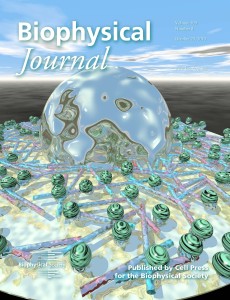 Intracellular transport of vesicles and organelles is essential for maintaining spatial organization within eukaryotic cells. Transport of cargo is typically carried out by a combination of diffusion and active, motor-driven translation along networks of actin and microtubule cytoskeletal filaments. Perturbations to transport can significantly impact cellular viability and can result in disease at the organismal scale. While much work has been done to probe how motor properties affect transport, relatively little is understood about how the architecture of the network influences transport. Network architecture, characterized by the density, lengths, locations, and orientations of filaments, likely influences intracellular transport in much the same way that road connectivity is a critical determinant of vehicular traffic. In our study, we implement simulations in which filament networks with a wide range of architectures are explicitly modeled to investigate the effects of network properties on transport from the nucleus to the cell membrane.
Intracellular transport of vesicles and organelles is essential for maintaining spatial organization within eukaryotic cells. Transport of cargo is typically carried out by a combination of diffusion and active, motor-driven translation along networks of actin and microtubule cytoskeletal filaments. Perturbations to transport can significantly impact cellular viability and can result in disease at the organismal scale. While much work has been done to probe how motor properties affect transport, relatively little is understood about how the architecture of the network influences transport. Network architecture, characterized by the density, lengths, locations, and orientations of filaments, likely influences intracellular transport in much the same way that road connectivity is a critical determinant of vehicular traffic. In our study, we implement simulations in which filament networks with a wide range of architectures are explicitly modeled to investigate the effects of network properties on transport from the nucleus to the cell membrane.
The cover image shows a three-dimensional visualization of intracellular transport inspired by our simulations. The image was rendered in the open-source ray-tracing program POVRAY and shows a random network of cytoskeletal filaments (red/blue cylinders) guiding the transport of cargo vesicles (green/black spheres) through a cell. Filaments have a polarity, represented by the red and blue ends, which dictates the direction of motor traversal along the filaments. The cell nucleus is represented by the large, silver sphere in the center of the image. The cytoplasm, which contains all cellular material outside the nucleus, is represented by the thin metallic disk under the filaments that reflects the two-dimensional network geometry.
Our simulations showed that transport times are minimized when the mass of the cytoskeletal network is localized close to the nucleus. Prior models of transport that used intermittent processes to model ballistic and diffusive modes of transport assumed spatial homogeneity; here, we show that breaking this homogeneity may enhance transport. By explicitly modeling filaments, we reveal that mean transport times in random networks are primarily dictated by total filament mass. However, particular filament arrangements can cause “traps” near the nucleus that result in highly variable transport times. This variability can be mitigated by distributing the network mass over more filaments with shorter lengths and by introducing a buffer region between the nucleus and the transport network. Our results also show that multiple motors actually slow cargo transport and increase variability, suggesting that single motors can more robustly transport cargo than a collection of multiple motors over random networks.
Given that variability in transport times can be very large, it seems likely that characteristics of the transport system, such as network architecture, have been tuned, in some cases, to reduce variability, even at the expense of non-optimal mean transport times. Overall, our results suggest a diverse range of mechanisms by which molecular transport on filaments can be tuned and regulated. There are potential applications for enhancing reactions in biomimetic systems through rational transport network design. Our work (details at gopinathanlab.ucmerced.edu and whatislife.stanford.edu) will be of interest to biophysicists and bioengineers, as well as to molecular and cellular biologists working on intracellular transport-related topics.
- David Ando, Nickolay Korabel, Kerwyn Huang, Ajay Gopinathan